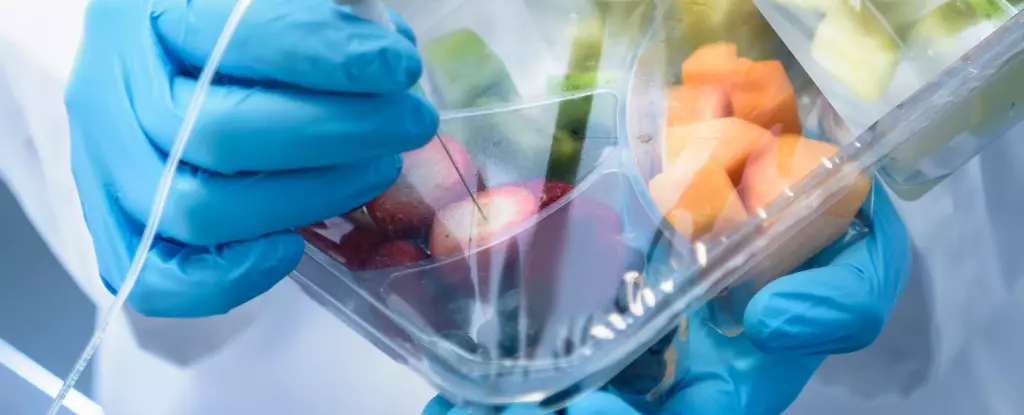Recent research has unveiled a concerning reality: over 3,600 different chemicals used in food packaging and preparation have been detected in human bodies. This significant finding raises serious questions about the safety of the substances we come into contact with daily. The study, led by Birgit Geueke from the Food Packaging Forum Foundation, highlighted that approximately 100 of these chemicals are considered “high concern” due to their potential health risks. Notably, while some chemicals like PFAS (per- and polyfluoroalkyl substances) and bisphenol A (BPA) have been the subjects of extensive research and regulatory action, others remain largely unstudied and their effects unknown.
The researchers had previously compiled a comprehensive list of around 14,000 food contact chemicals (FCCs) capable of leaching into food from various types of packaging, including plastic, paper, glass, and metal. In addition, these chemicals can originate from other parts of the food production process, such as conveyor belts and kitchen tools. The study involved a biomonitoring assessment to search existing databases for these chemicals within human samples. Surprisingly, the investigation revealed 3,601 FCCs present in the human body—about a quarter of the complete list known to exist.
However, this significant number does not definitively indicate that these chemicals originated solely from food packaging. According to Geueke, other potential exposure sources could also contribute to their presence in the body. This ambiguity complicates our understanding of how our food consumption habits may affect our health.
Among the chemicals classified as “high concern,” several, like PFAS, have garnered attention for their persistence in the environment—often referred to as “forever chemicals.” Studies have linked these substances to a variety of adverse health outcomes, including cancer, hormone disruption, and developmental issues. BPA, another prolific contributor to health problems, is well-known for its ability to interfere with endocrine function and has already faced various bans in consumer products, particularly those used for infants.
Moreover, the presence of phthalates—chemicals associated with infertility—further exacerbates public health concerns. Another category identified in the research, oligomers, are byproducts of plastic production that have yet to be thoroughly evaluated in terms of their health effects. Geueke indicated that the lack of research surrounding these chemicals poses a significant barrier to public knowledge and health policy.
Compounding the issue is the intricate nature of toxicology, summarized by the adage that “the dose makes the poison.” While the researchers could not measure the concentration levels of these chemicals in the human body, caution is warranted due to the potential for chemical interactions. One alarming sample reportedly contained up to 30 different PFAS, indicating a complex mix of substances that could collectively pose risks to human health. This multiplicity of exposures highlights the urgent need for further investigation and more protective measures regarding chemical exposure.
Experts, including Duane Mellor from Aston University, urge a balanced perspective to these findings. While the results should not instigate panic, they underscore the importance of demanding better data and reducing unnecessary exposure to potentially harmful chemicals. Public awareness and advocacy for safer packaging options may be key strategies in mitigating health risks associated with chemical exposure.
Regulatory action is already in motion; the European Union is progressing toward banning PFAS in food packaging and is contemplating a similar ban for BPA by the end of the year. Such measures could help protect public health and ensure that future generations are not exposed to harmful substances present in food packaging.
As we continue to learn more about the implications of these chemicals, a proactive approach involving consumer awareness, regulatory measures, and scientific research will be essential to safeguard our health and the environment from invisible threats.

Leave a Reply